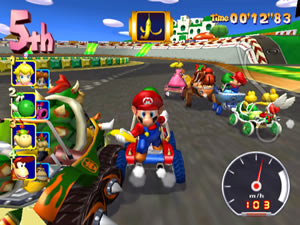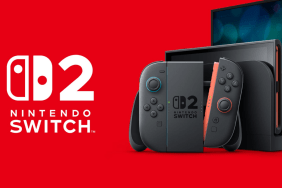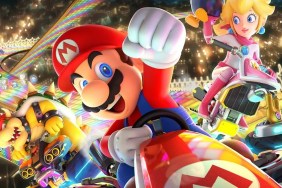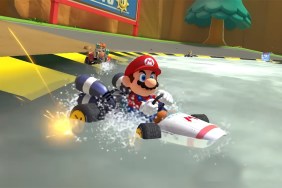Dash of the Titans!
Have you recently had the urge to throw turtle shells at other cars? Drop banana
peels in the middle of the road? Drive like a complete maniac while wearing a
fake moustache and an old “Captain N” t-shirt? Clearly you’re in tune with the
pulse of the gaming universe…or you’re just a Mario Kart fan.
You’re not alone, though. Nintendo freaks have been waiting impatiently for
the return of the racer that put the ‘art’ in ‘kart’, especially since Mario
Kart 64 came out a whopping six years ago. How would the classic series
fare on the Gamecube? Well, after taking an extended vacation from the console
scene, Mario Kart: Double Dash is here to answer the tough
questions.
This time around, the world famous plumber and his cast of crazy critters
hit the asphalt in a tag-team race through a very familiar Nintendo landscape.
It’s got all of the turtle shells, banana peels and multiplayer madness you
could ever want, but will that be enough power to get this racer to the top
of the podium? Not exactly.
If
you played Mario Kart 64, you know exactly what to expect.
Mario Kart: Double Dash provides more of the same racing with
familiar Nintendo stars grabbing powerups and jockeying for the checkered flag.
Not a whole lot has changed, but there is one noticeable tweak: two-seater karts.
Instead of the typical single-passenger vehicles, you now drive karts made
for two, one driver and one shooter. In the single-player game, you’ll barely
notice this since the easy-to-digest control will have you zooming around and
powersliding exactly like the good old one-seater. The multiplayer game is a
different story, and teammates will need to really work together to get the
best performance out of your vehicle.
Sixteen classic and not-so classic Nintendo characters make an appearance, including staples like Mario, Luigi and Donkey Kong and oddballs like Baby Mario and the crazy egg-spitting Birdo. Each of these characters comes with the ability to pick up their own special attack, such as Baby Mario’s Chain Chomp and Donkey Kong’s Giant Banana. Each character is also classified as Light, Medium or Heavy with the heaviest character you select determining which karts you will be able to choose from.
Naturally, each kart has its own characteristics, with the lighter karts having better acceleration and the heavier karts having a higher top speed. Additional karts can be unlocked as you progress, but the new karts are mostly spinoffs of the ones available at the start.
The first tag-team technique to be mastered is the “double dash” start, where both players jam on the accelerator the second the green light hits. This enables the kart to take off from the line with a blazing start, leaving the competition in the dust. From then on, you’ll need to effectively manage your weapons as each person can only carry one at a time. Only the shooter can pick up weapons (unless you grab a double item box), so switching places during a race is crucial. This is done at the tap of the Z-button, though in multiplayer, both players must hit it simultaneously. Telepathy is definitely a plus here.
This teamwork component takes the multiplayer fun up a notch and highlights
the advantages of having a buddy or three over for some friendly competition.
Sadly, that’s about the only real improvement to be found in a game that we
last saw over a half-decade ago. The game modes are exactly the same, with Grand
Prix, Time Trial, Versus and Battle modes.
The tracks in the first three Cup races provide no new surprises, generally
sticking to simple designs with little to no creativity or shortcuts involved.
The unlockable Special Cup is better, but you’ll need to do the work to unlock
it first. Even the Battle mode arenas are as plain as they come. You’ll battle
on top of a giant cookie, the square Block City, Pipe Plaza and a giant GameCube
with no obstacles.
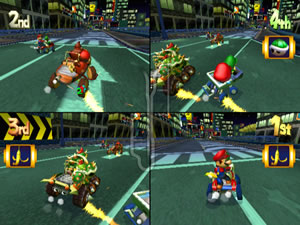 What
What
gives? The older Mario Karts were all about finding shortcuts
on big, twisting, creative tracks, but here it’s all about shaving off a second
or two by powersliding around a turn. I’m very surprised that the tracks aren’t
more exciting.
At least the Battle mode games are good. The classic Balloon Battle returns
alongside two new modes called Shine Thief and Bob-omb Blast. Shine Thief is
essentially Capture the Flag, challenging players to grab the Shine and hold
on to it for a full minute. It’s a simple concept, but pretty fun when you’ve
got four players zooming around and hunting each other. Bob-omb Blast is even
simpler, forcing players to throw Bob-ombs at each other until someone gets
enough points to win. It can be quite the chaotic (and fun) mess with enough
guys playing.
Frankly, the Versus racing mode is still the crowning achievement, and when you’ve got a full house, it’s easy to see how the kart racing genre got started in the first place. The Gamecube’s power allows for no framerate drops during the split-screen, which makes for a fun, frantic and smooth multiplayer game.
It’s also notable that the game supports LAN play, so all the Nintenerds out
there who have managed to link up their Gamecubes will be happy. You can link
up to eight players on eight different TVs. Just make sure you’ve also got eight
Gamecubes with broadband adapters, eight TVs and enough networking gear to go
around.
No matter how you play, Mario Kart: Double Dash looks good
thanks to its slick, super high framerate. The characters are bright and colorful
and look, well, exactly like they always look. Classic Nintendo delivery through
and through, which also means the typical midi tunes and dorky voices.
Mario Kart: Double Dash recaptures the simple magic that
made the original a hit, but doesn’t make much of an effort beyond that. The
inclusion of two-seater karts is a nice touch and the multiplayer game continues
to shine, but the single-player lacks substance and the track design is generally
pretty bland. After such a long wait, it’s a bit disappointing that so little
has changed. Still, the elusive fun factor checks in long enough to keep this
game from getting a flat tire.
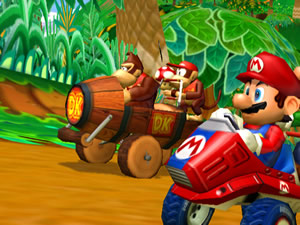
-
Two-seater strategy
-
Good control
-
Versus still rules
-
Bland track design
-
Single-player is mediocre
-
Not much extra
